Finding ways to improve patient safety is an ongoing challenge for hospitals. Proactively addressing patient safety and quality issues before they occur builds trust with your community and reduces the risk of adverse patient experiences. Below are five ways to improve patient safety in your facility.
What is Patient Safety?
Patient safety goes far beyond the physical safety of patients. Patient safety and quality improvement reduce errors that could negatively impact patient health care and treatment outcomes. Modern health care is a complex ecosystem, fed by a continuing stream of new technology, treatments, and software. Patient safety ensures these factors work together in a way that minimizes risk.
5 Tips for Improving Patient Safety at Your Hospital
1. Re-invest in a Patient-Centric Care Approach
Twentieth-century healthcare relied strongly on evidence-based treatments, where the attending doctor dictated a course of action for the patient, and the patient was, by and large, expected to accept the doctor’s judgments passively. Evidence-based treatments are still an essential aspect of healthcare—doctors and other medical professionals have the knowledge and training patients lack—but in recent decades, the importance of patient-centric care has become apparent.
Patient-centered care involves patients in healthcare decisions and emphasizes open communication, shared decision-making, and education. The patient is informed on all aspects of their condition and treatment plan and has a say in treatment choices.
Patient-based care has not replaced evidence-based treatments. Instead, the two modalities are symbiotic, creating trust and promoting the best possible treatment outcomes. Patient-centric care also asks patients to verify all medical procedures, reducing error risk and improving patient safety in locations of care.
2. Measure Your Hospital's Current Patient Safety Culture
Hospital staff have practical, day-to-day experience with patient safety issues that may go unnoticed by administration. Take advantage of this deep well of knowledge by surveying your team and asking them to raise safety concerns. The results of such surveys help you accurately evaluate the nature of your existing patient safety culture and identify areas of concern. The AHRQ provides free patient safety culture surveys for hospital use.
3. Identify Gaps in Processes
Your patient safety culture survey results help you run a gap analysis. A gap analysis looks for the holes in your patient safety processes and procedures, illuminating where you’re taking steps toward patient safety and quality improvement and where your facility falls short. For instance, you may discover a need to automate your ability to track the movement of vendors and patient visitors on-site or find patient transfers increase gaps in continuity of care.
4. Reset Expectations for Compliance
employees must understand your expectations for compliance regarding patient safety, including standards of care, visitor access and restrictions, and patient privacy. A hospital's compliance plan must align with regulatory compliance standards, and all employees must have the appropriate credentials and training to serve patients safely.
In addition to clearly outlined compliance policies, employees should have a safe way to voice concerns if they see gaps in patient safety processes or need to report non-compliant behavior. Assurances must be in place that the administration will address concerns with impartiality and without reprisal.
5. Optimize Your Discharge Process
Readmissions after discharge can be inevitable, but many cases are avoidable. Work with patients to ensure compliance with medication and treatments, including postsurgical care, and schedule any necessary follow-up appointments.
All treatment and follow-up visit information would be made available to the patient, either in print form, through an online app, or both. Include the contact information of relevant hospital departments and a list of post-visit symptoms that indicate the need for further (or immediate) medical attention.
Final Thoughts on Patient Safety
Patient safety and quality improvement are ongoing projects for all hospitals. New challenges develop over time, necessitating new ways to improve patient safety. A consistent approach to identifying, evaluating, and resolving potential issues is the best path toward continuous improvement.
Request a meeting for more information on how we can help fulfill your digital credentialing needs and how our credentialing capabilities can benefit your staff, healthcare providers, and patients.




